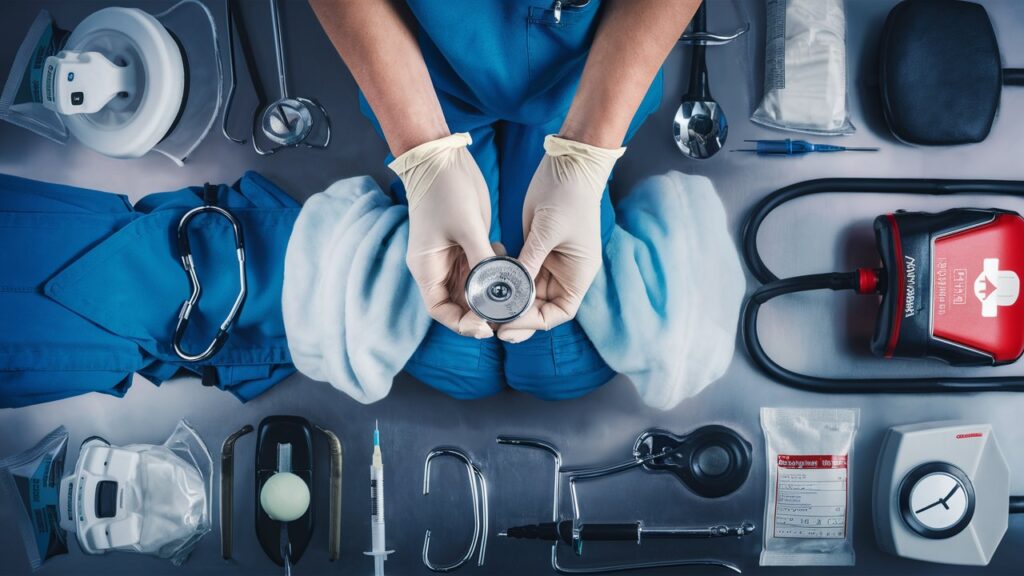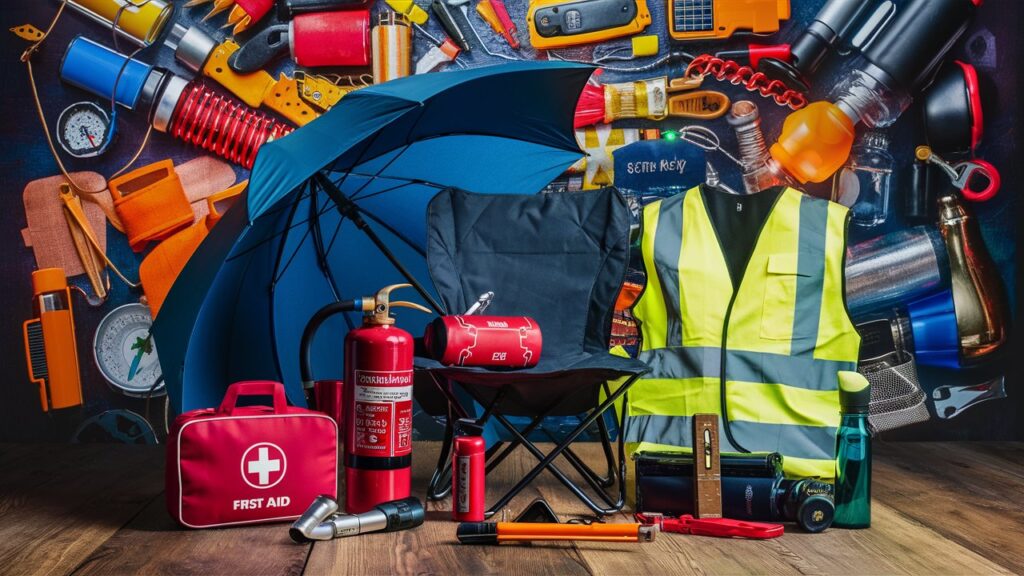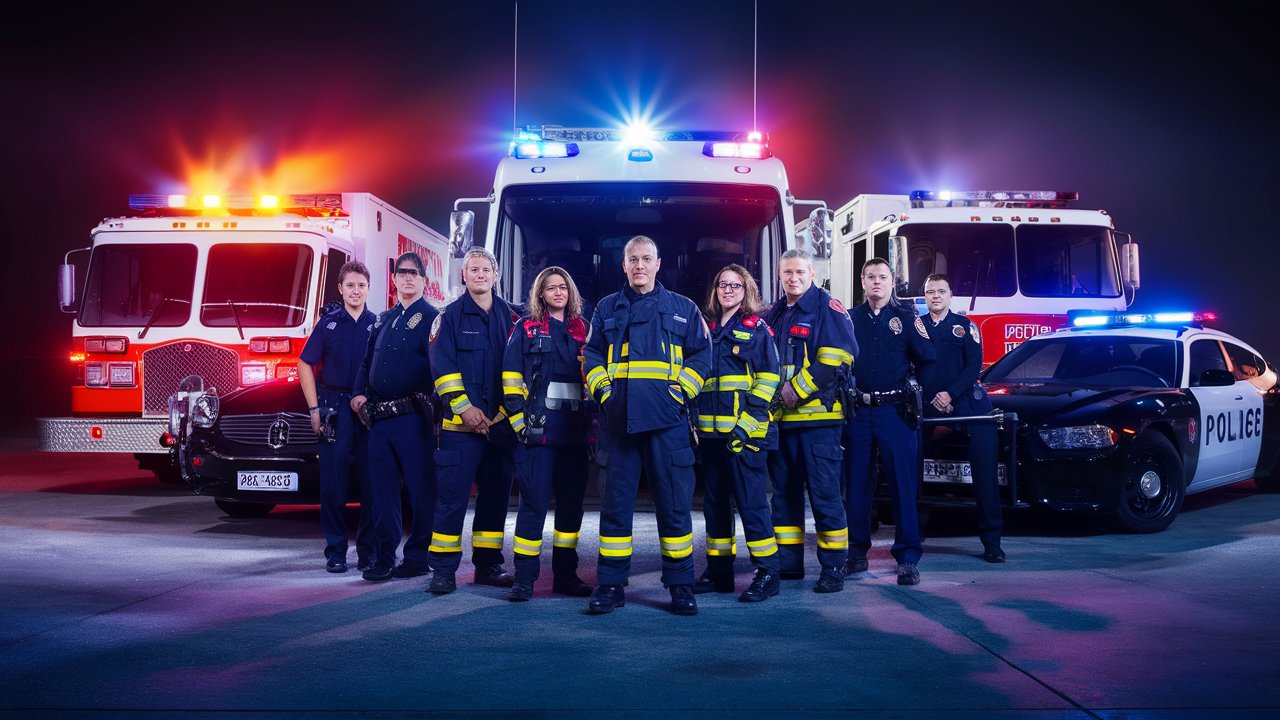Emergency situations in healthcare demand swift and effective responses, often relying on specialized equipment. This article provides a comprehensive overview of the emergency equipment used in healthcare settings, highlighting its significance in saving lives and ensuring optimal patient care.

Defining Emergency Equipment
Emergency equipment encompasses a range of devices designed to address critical medical situations promptly. From basic first aid kits to sophisticated life-support systems, these tools play a vital role in stabilizing patients and providing essential care.
Types of Emergency Equipment
Defibrillators
Defibrillators are crucial for restoring normal heart rhythm in cardiac arrest cases, delivering life-saving shocks to the heart.
Oxygen Tanks
Oxygen tanks supply supplemental oxygen to patients experiencing respiratory distress, ensuring adequate oxygenation.
Ventilators
Ventilators assist patients with compromised breathing by delivering oxygen-rich air into their lungs, supporting respiratory function.
First Aid Kits
First aid kits contain essential supplies for managing minor injuries, wounds, and other medical emergencies until professional help arrives.
Essential Features of Emergency Equipment
Emergency equipment must possess certain key features to fulfill its intended purpose effectively. Portability ensures mobility, while durability ensures reliability in demanding situations. Ease of use facilitates quick deployment, allowing healthcare providers to focus on patient care.

Maintenance and Inspection Procedures
Regular maintenance and inspection are essential to ensure the reliability and safety of emergency equipment. Adhering to established protocols and safety standards minimizes the risk of malfunctions during critical moments.
Training for Emergency Equipment Use
Proper training and certification are paramount for healthcare personnel tasked with using emergency equipment. Training programs equip staff with the necessary skills and knowledge to operate equipment efficiently, potentially saving lives in emergencies.
Emergency Response Protocols
Effective emergency response requires coordinated efforts and clear protocols. Establishing comprehensive response plans ensures prompt action and optimal utilization of emergency resources.
Common Locations for Emergency Equipment
Emergency equipment is strategically placed in various healthcare settings, including hospitals, ambulances, clinics, and public spaces. Accessibility to equipment enhances preparedness and facilitates timely interventions.
Cost Considerations
Budgeting for emergency equipment involves assessing the cost-effectiveness of different options while ensuring quality and reliability. Balancing financial constraints with the need for optimal patient care is essential for healthcare facilities.
Regulatory Compliance
Compliance with regulatory standards and guidelines is imperative for emergency equipment manufacturers and healthcare providers. Meeting regulatory requirements ensures the safety, effectiveness, and quality of equipment.
Future Trends in Emergency Equipment
Advancements in technology continue to drive innovation in emergency equipment. From telemedicine capabilities to AI-assisted diagnostics, future trends promise enhanced efficiency and effectiveness in emergency response.
Case Studies
Real-life examples demonstrate the critical role of emergency equipment in saving lives and mitigating health crises. Case studies highlight successful interventions and underscore the importance of preparedness and swift action.
Conclusion
The effective management of medical emergencies hinges on the availability, accessibility, and proper utilization of emergency equipment. Investing in quality equipment, training, and infrastructure is essential for healthcare facilities to deliver optimal patient care and improve outcomes.
FAQs
- What are the essential features of emergency equipment?
- Essential features include portability, durability, and ease of use to ensure effective deployment during emergencies.
- How often should emergency equipment undergo maintenance?
- Emergency equipment should undergo regular maintenance according to established schedules and safety standards to ensure reliability and safety.
- What type of training is required for using emergency equipment?
- Healthcare personnel must undergo comprehensive training and certification to proficiently operate emergency equipment and respond to medical emergencies.
- Where is emergency equipment commonly found?
- Emergency equipment is commonly found in hospitals, ambulances, clinics, and public spaces to facilitate timely interventions during medical emergencies.
- How can healthcare facilities ensure regulatory compliance with emergency equipment?
- Healthcare facilities must adhere to regulatory standards and guidelines for emergency equipment procurement, usage, and maintenance to ensure compliance and patient safety.
- What are the future trends in emergency equipment?
- Future trends in emergency equipment include technological advancements such as telemedicine integration, AI-assisted diagnostics, and enhanced connectivity for improved emergency response.




